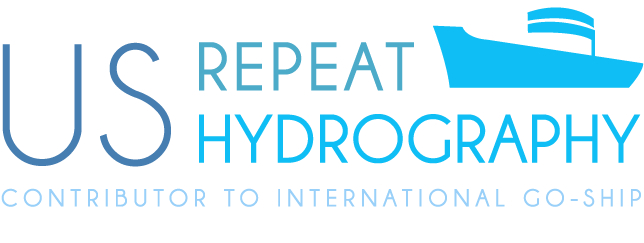
26 September 2014
Lynne Talley (SIO) and Brendan Carter (Princeton)
On 20 March, 2014, we sailed from Hobart, Tasmania on the U.S. Antarctic Program’s Nathaniel B. Palmer, passing under the Tasman Bridge and on out to sea. We are underway to our first bio-Argo float deployment far south of New Zealand, which is on the way to GO-SHIP section P16S, commencing at 67°S, 150°W. The transit to the first float deployment is taking about 6 days. By the end of the cruise in Tahiti on May 5 we will have deployed 12 profiling biogeochemical floats, 30 surface drifters, made daily biogeochemical observations for NASA ocean color satellite cal/val, and completed more than 105 stations with physical and chemical measurements from surface to bottom. We are sampling or deploying instruments for approximately 18 different principal investigators, from NSF funding, NOAA and NASA. Our science party of 29 includes 9 grad students from all over the U.S. and the world.
The 12 floats that we will be deploying will be part of the global Argo float array, profiling every 10 days to 2000 m depth. They include the first set of fully-equipped Southern Ocean biogeochemical profiling floats, measuring oxygen, nitrate, fluorescence and backscatter, and―the newest addition―pH sensors, with the southernmost group having the capability to sense and avoid coming up to the sea surface under sea ice. We hope that these will be the “tip of the iceberg” for the growing Southern Ocean Observing System. The goal is to observe the Southern Ocean’s important uptake of excess CO2 from the atmosphere, and directly observe its acidification resulting from global change.
The stations that we will occupy along 150°W are repeats of two earlier transects. This set of stations was occupied in 1991 as part of that decades’ global observing program WOCE, and then again in 2005 as part of the international repeat hydrography program, now called GO-SHIP, which criss-crosses all of the oceans. We are analyzing about 19 different properties in the water collected from the rosette water sampler, and collecting vertical profiles of conductivity, temperature, oxygen (2 sensors), and pressure (on the CTD), velocity from a Lowered Acoustic Doppler Current Profiler (LADCP), transmittance, fluorescence, and temperature microstructure from a new program (“chi-pod”) for U.S. GO-SHIP. The goal is to observe changes over the decades in the ocean’s heat, salt, nutrient, oxygen, and carbon content. In this part of the world ocean, many of the changes observed thus far have been linked to global change.
We’re currently steaming southeast just along the Australian/New Zealand EEZ boundary. We passed north of Macquarie Island earlier today, getting a push from the northernmost branch of the Antarctic Circumpolar Current, which roughly parallels the Campbell Plateau. Underway measurements commenced close to Hobart: velocity profiling with the ship’s two ADCP systems; meteorological and bathymetric measurements; surface seawater sampling for temperature, salinity, pCO2; and continuous surface sampling of optical properties (backscatter, chlorophyll, CDOM fluorometry).
We estimate that we’ll be in position for the first station/float deployment ―on a P14S waypoint measured in 2012 by a Japanese research expedition, and in 1996 as part of WOCE―in the afternoon on the 26th of March local time.
In between logistical meetings, we’ve been having daily science meetings. We’ve had four people give science talks already, and have a rough plan for 8 more talks, 2 software tutorials, and a host of ‘lab visits’ between our various analysts in the days to come.
Some analysts have already begun their watch schedules to deal with the underway sampling. The rest of us are looking forward to losing ourselves in the blur of deploying a rosette package every few hours, though having time for daily science meetings has been a luxury indeed.